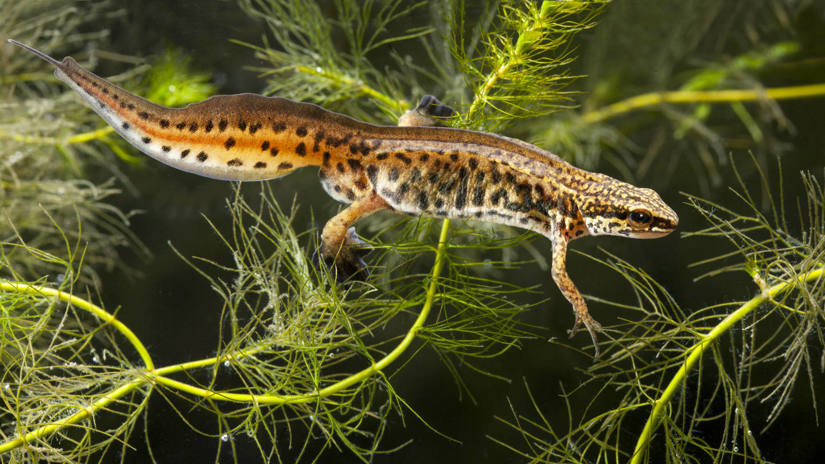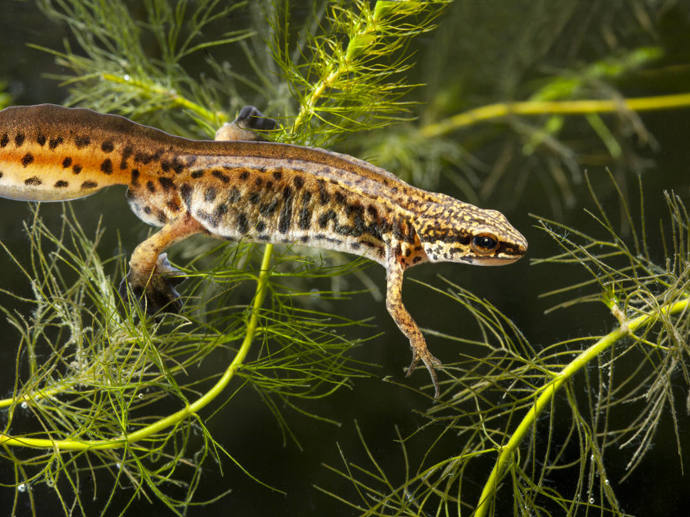

British newts: an identification guide
Amy Lewis • 19 Feb 2020
Learn to tell the difference between the UK's three newt species with our quick and easy identification guide.
Look out for these cold-blooded creatures along woodland edges, glades, ditches and ponds. Woods are ideal for hunting and breeding, while crevices, burrows, logs and leaf litter offer perfect winter shelter.
Trees woods and wildlife
Shy but full of surprises, the adder is the UK’s only venomous snake. It spends its days in woodland, soaking up the sun and swallowing its prey whole.
Trees woods and wildlife
Smooth. Slick. Slippery. These quick-jumping masters of disguise are regular visitors to garden ponds.
Trees woods and wildlife
Timid, lightning-quick and sun-worshipping. The common lizard basks in the warmth of the sun along woodland edges, sunny glades and rides. It stays close to dense cover so it can quickly hide among twigs, logs and leaves.
Trees woods and wildlife
Lover of damp log piles and deep leaf litter. The common toad spends much of its year in moist, shaded places, often in woodland, feeding on worms, slugs and insects.
Trees woods and wildlife
Stealthy slitherers. Grass snakes are lethal hunters of frogs, toads and other small creatures, but will rush for cover at the first sound of humans approaching.
Trees woods and wildlife
Legless lizards which are often mistaken for snakes. These sleek and subtle creatures are a common sight in UK woodland.


Amy Lewis • 19 Feb 2020
Learn to tell the difference between the UK's three newt species with our quick and easy identification guide.